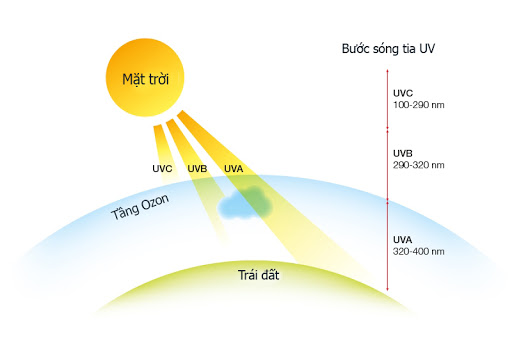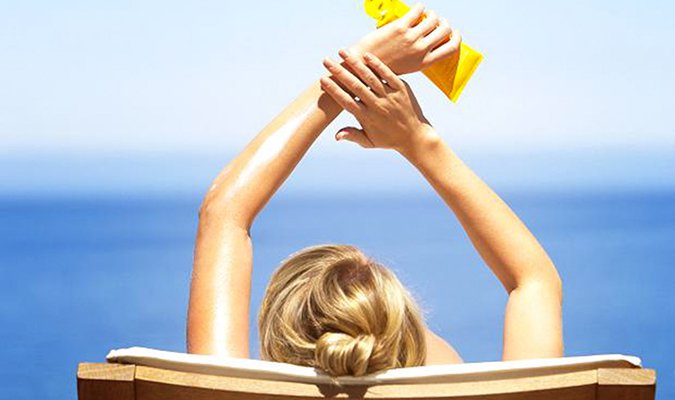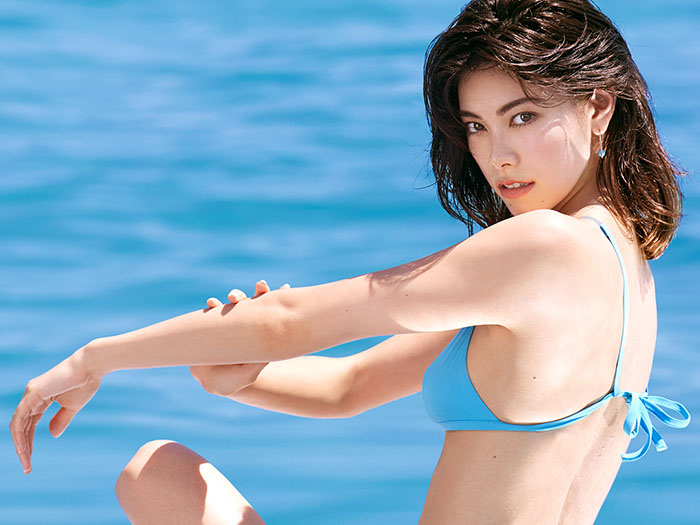Sunscreen
How sunscreen can protect against UVA, UVB rays?
What are UV rays?
UV (Ultraviolet) rays, also known as ultraviolet rays, are electromagnetic waves whose wavelengths are shorter than those of visible light but longer than those of X-rays.
Based on the impact of ultraviolet rays on human health and the environment, UV rays can be divided into three categories: UVA (wavelength 380 – 315 nm), UVB (wavelength 315 – 280 nm), UVC (wavelength less than 280 nm)
Each type of UV rays with different energy levels will have different levels of harmful effects on the environment and human health. Specifically:

UVA rays: can penetrate the clouds, the air, cause skin aging, long-term exposure, without care, and protection will affect the skin cell structure, leading to skin cancer.
UVB rays: still able to partially penetrate through ozone and the atmosphere, causing skin damage, dehydration, and skin irritation.
UVC rays: UV rays have the highest energy, causing skin irritation, but it is prevented by the ozone layer.
So how to protect the body under the effects of UV rays?
The amount of UV exposure you are exposed to depends on how long your skin is exposed to UV rays and the skin protective factors you use such as sunscreen, clothing, glasses, etc.
Some people often think that only when going to the sun, going to the beach, swimming pool, .. should be protected from UV rays. However, whether you hide all day indoors or wear sunscreen, UV rays cannot be avoided. Because it can easily pass through windows, clouds,… The best way is to choose more sunscreen products to protect your skin.
You can choose sunscreens based on SPF and PA to protect your skin from UVB, UVA rays.

SPF is an indicator of sun protection ability, helping you to know how well a sunscreen will protect your skin from UVB rays.
1SPF is equivalent to 15 minutes of skin protected from UVB rays (under standard conditions, not affected by sweat or water.
For each purpose of use, you should choose the appropriate SPF:
SPF 15-30: this is the index for jobs that do not have to be exposed to direct sunlight.
SPF 50: for workers exposed to direct sunlight.
SPF 60-80: when going to the beach or for sunburned areas, undergoing treatment.
SPF80 – 100: Use limited due to possible irritation of sensitive skin.

PA (Protection Grade of UVA) is a symbol that measures the ability of sunscreens to filter UVA rays for the skin or to put it simply to help you know the level of sunscreen protection against UVA rays. PA is calculated by the + signs with 4 levels:
PA +: resistance to UVA rays from 50-74%
PA ++: relatively good resistance to UVA rays, from 75-86%.
PA +++: good resistance to UVA rays, 87-92%.
PA ++++: very good resistance to UVA rays, more than 93%.
However, you should pay attention, some products sometimes you do not see the PA index but Broad-Spectrum, this is the index replacing PA with sunscreen products from the US, UK.
With weather conditions like Vietnam, you should use a sunscreen with SPF 30-50 and PA should choose PA ++ or PA +++ is the best, but if you go to the beach or work in direct sunlight a lot, you should pay attention. more dentist.
